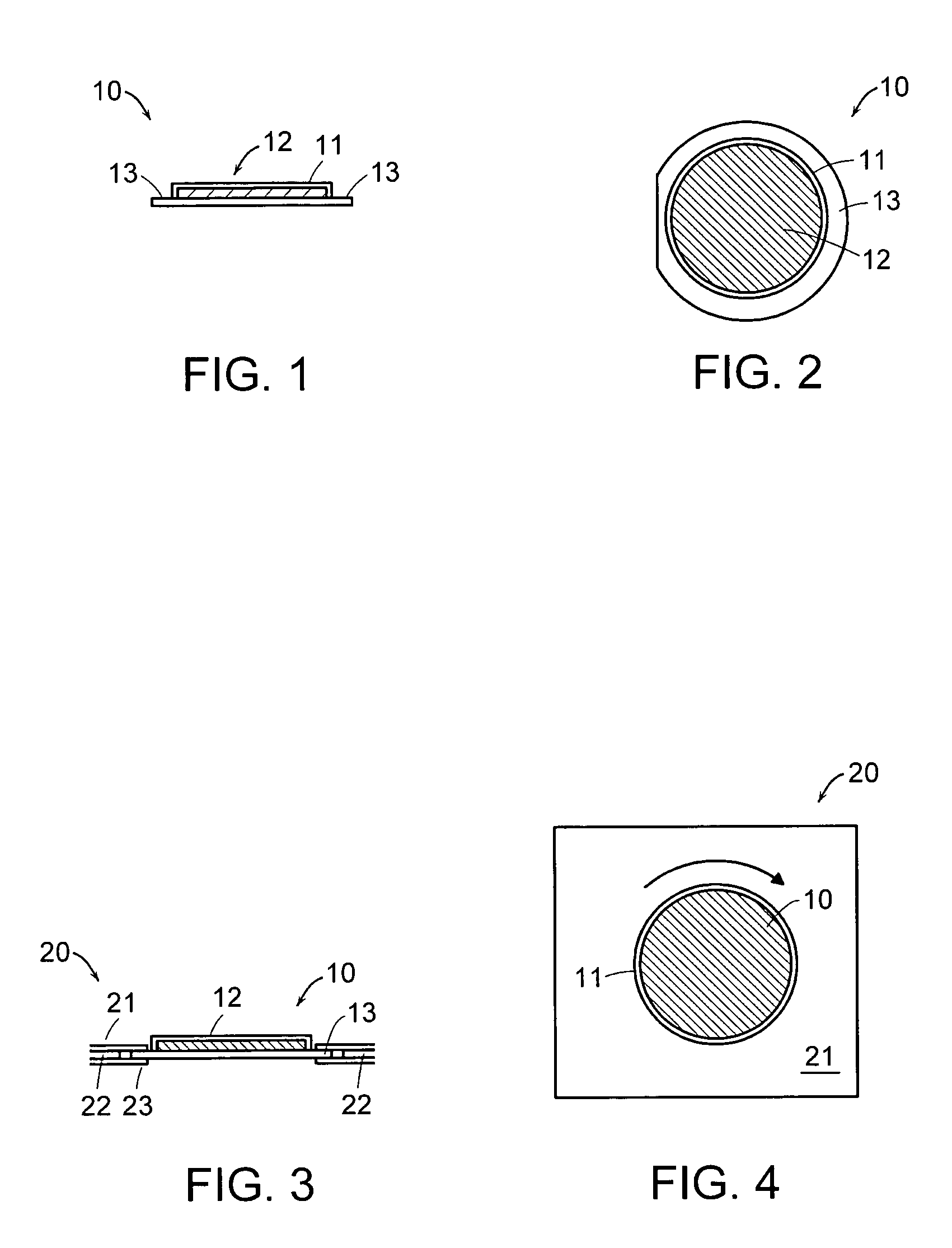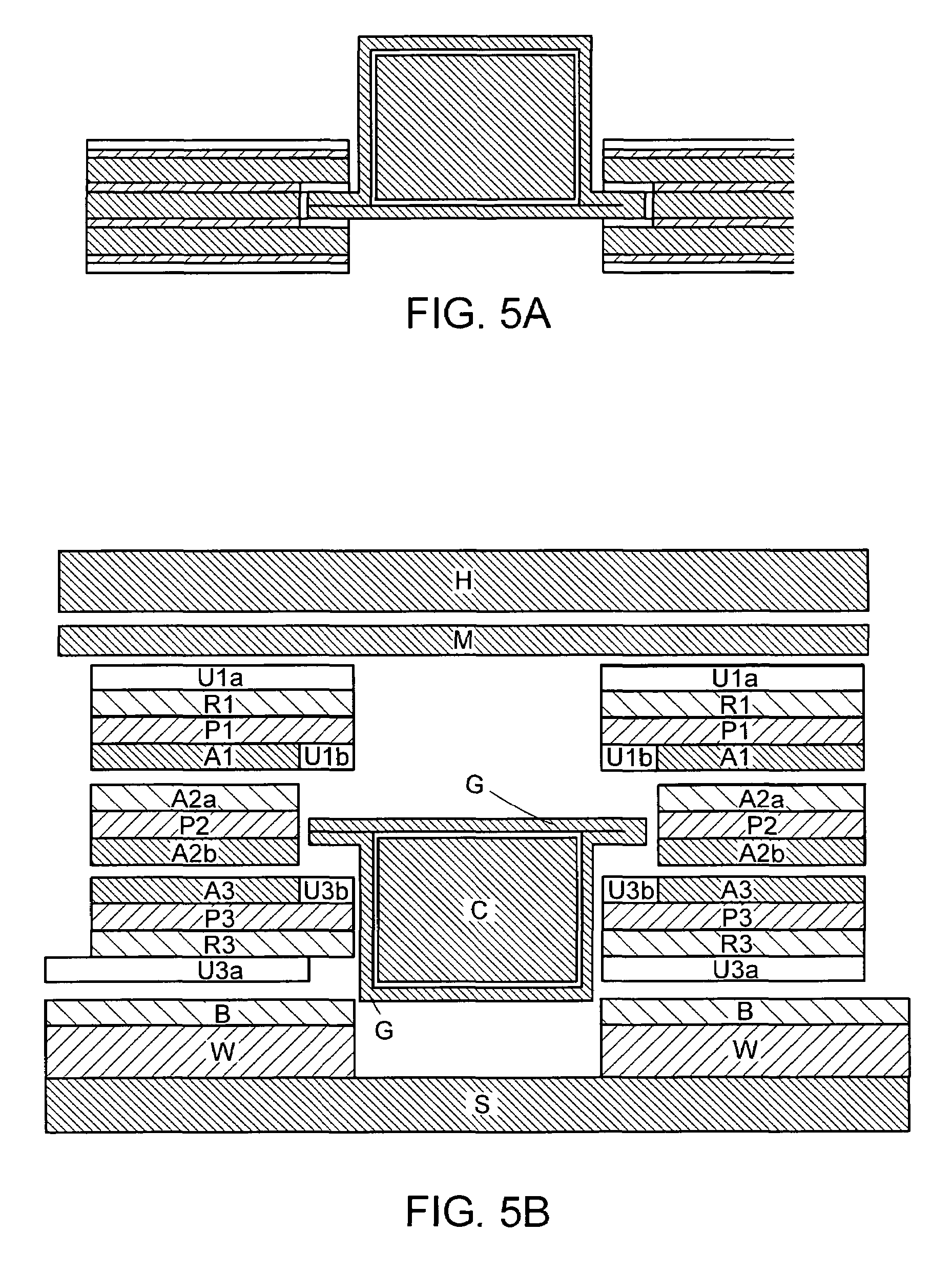Rotatable coin display
a coin display and rotating technology, applied in the field of mounting and displaying coins, can solve the problems of compounding the problem of maintaining rotational alignment, customer dissatisfaction, and flange damage, and achieve the effects of preventing flange damage, facilitating bubble rotation, and preventing undesirable “humps”
- Summary
- Abstract
- Description
- Claims
- Application Information
AI Technical Summary
Benefits of technology
Problems solved by technology
Method used
Image
Examples
Embodiment Construction
[0020]A description of preferred embodiments of the invention follows.
[0021]FIG. 1 is a side view of a coin 11 encapsulated within a bubble 10. The bubble is preferably comprised of a semi-rigid transparent material, such as a plastic, that is vacuum-formed to the size and shape of the coin. As shown in FIG. 2, the bubble 10 includes a central capsule 12 containing the coin 11, where the shape of the capsule is roughly commensurate with the shape of the coin. The bubble also includes a flange 13 which extends from the outer perimeter of the capsule 12.
[0022]The bubble can comprise two separate pieces that are joined together to encapsulate the coin. In other embodiments, the bubble can comprise a single piece that is folded over to form a central capsule and the flange.
[0023]FIG. 3 is a cross-section of a laminated assembly 20 with a rotatable coin bubble 10. The laminated assembly includes three layers of a rigid or semi-rigid material, such as card stock, which support the bubble ...
PUM
 Login to View More
Login to View More Abstract
Description
Claims
Application Information
 Login to View More
Login to View More - R&D
- Intellectual Property
- Life Sciences
- Materials
- Tech Scout
- Unparalleled Data Quality
- Higher Quality Content
- 60% Fewer Hallucinations
Browse by: Latest US Patents, China's latest patents, Technical Efficacy Thesaurus, Application Domain, Technology Topic, Popular Technical Reports.
© 2025 PatSnap. All rights reserved.Legal|Privacy policy|Modern Slavery Act Transparency Statement|Sitemap|About US| Contact US: help@patsnap.com



